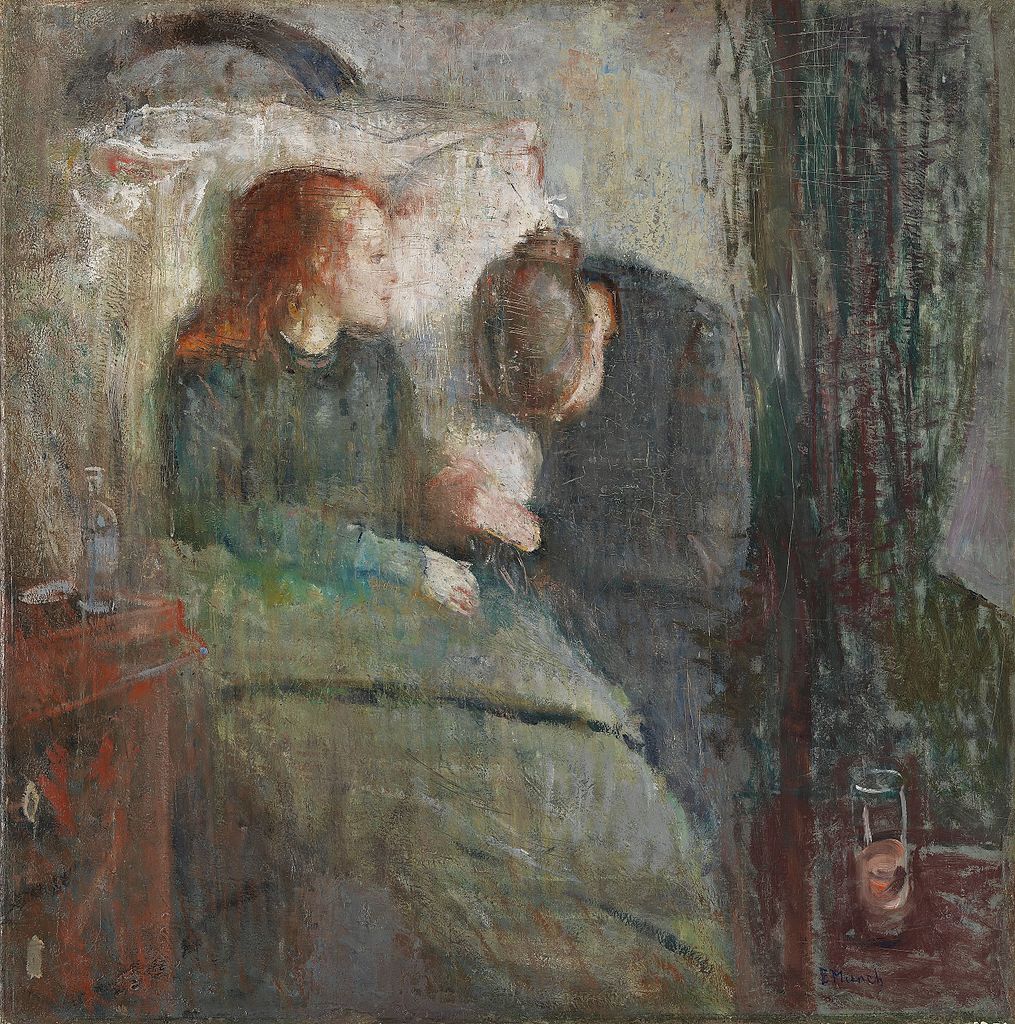Dark Night: The Illness Narrative
Rebecca Spears
 “Pale horse, pale rider done taken my lover away,” a line from an old spiritual hymn, is the inspiration for the title of Katherine Anne Porter’s novella, Pale Horse, Pale Rider. I taught this text, a rare narrative of the 1918 Spanish Flu pandemic, to my students last semester because it provides an accessible introduction to stream-of-consciousness writing. More importantly, Porter’s story is autobiographical, as the author herself nearly succumbed to the flu. Through stream-of-consciousness, she shows the effect of a collective trauma on the individual psyche, a dark night of the soul.
“Pale horse, pale rider done taken my lover away,” a line from an old spiritual hymn, is the inspiration for the title of Katherine Anne Porter’s novella, Pale Horse, Pale Rider. I taught this text, a rare narrative of the 1918 Spanish Flu pandemic, to my students last semester because it provides an accessible introduction to stream-of-consciousness writing. More importantly, Porter’s story is autobiographical, as the author herself nearly succumbed to the flu. Through stream-of-consciousness, she shows the effect of a collective trauma on the individual psyche, a dark night of the soul.
The novella is set during World War I and opens with Miranda, a young newspaper reporter in Denver, sunk deep into nightmare. On her horse Graylie, she tries to outrace a “lank, greenish stranger” riding a pale horse. It soon becomes clear that this rider resembles one of the Four Horsemen of the Apocalypse, referenced in Revelations. In this dream, she does outrace Death; it isn’t her time to die just yet. Fragmented memories and images of death pervade the story—with “this funny new disease,” the Spanish flu bringing on a pandemic, even as young soldiers prepare to go overseas to fight and perhaps die. We’re with Miranda as she falls in love with a soldier, Adam, and as she becomes increasingly ill, struggling through semi-consciousness and delirium. The “pale horse, pale rider” spiritual, which Miranda and Adam sing, turns out to be horribly ironic because in the hymn, the pale rider eventually takes everyone but the storyteller.
Stories of illness serve several purposes, and one is to develop empathy in the reader for both the sufferer and those who care for ill loved ones. These narratives can show how the psyche experiences pain and how the soul aches when threatened with loss. When Miranda finally does recover from the flu, she discovers that Adam has succumbed to it while she herself was too ill to be aware of events around her. The novella then can be seen as a memorial to this Adam, and to Porter’s Adam who was also lost to the flu.
At the same time I taught Pale Horse, Pale Rider, I read a new book of prose poems, Stay, by Kathleen McGookey. By coincidence, a strong through-line in the poems is the illness and death of the poet’s mother and father. The father declines progressively from a “brain disease,” while the mother’s demise is sudden, from a deadly cancer. In Stay, the speaker’s shock and grief is laced with exhaustion, anger, and even brief moments of happiness and contentment. The poems give us a more intimate look at how wide-reaching the effects of illness are on an individual and her family.
In “Disease, in the Particular,” the speaker admits that her father’s brain disease “is real, stark, and incurable, so slow, so nearly imperceptible its progression, so—can I say this?—gentle, and so gentle his decline, how can I not cry?” And in this poem, the speaker knows she must accept what is terribly unacceptable: “I cannot hope to lift him out of his stiffening limbs and set him down shiny and baptized into the rest of his life.” The poem works against any romantic notions of the father’s decline, showing the reader in particular that at some point our loved ones will move inexorably toward death.
“Sometimes the Ache Sleeps” delves deeper into the father’s illness and the mother’s sudden bout with cancer, while the speaker herself mothers an infant son:
When my dad reached unsteadily from his wheelchair to put my baby’s sock on, the baby clapped and waved. When I helped my mom to the bathroom, she whispered, My little girl. By then the ache was all around us.
In these few lines, we’re aware of the metaphor of pain, the symbol of life inherent in the baby, and the psychic turmoil in the speaker, who cannot fully experience the joy of the new child in the midst of the illnesses that will soon claim both her parents.
For the poet of Stay and the storyteller of Pale Horse, Pale Rider, the painful reality they impart to us is that a loved one’s illness and death bring on conflicting emotions in the sufferers and survivors—love and grief, ache and anger, to name a few—and that recovering from such loss is not straightforward. Their stories remind us that not all illnesses can be cured, no matter our prayers, because to have a life here and now is to have a gift that we will someday have to relinquish.
